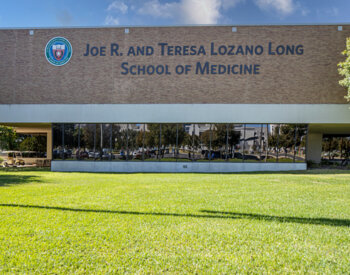The University of Texas Health Science Center at San Antonio (also called UT Health San Antonio) received $131.5 million in National Institutes of Health funding in federal fiscal year 2023, according to the Blue Ridge Institute for Medical Research. The university ranked No. 72 out of the 2,886 public and private institutions that received NIH funding in federal fiscal year 2023, an increase in NIH funding of 31% over the previous fiscal year.
UT Health Science Center San Antonio’s funding sources continue to focus on priority research areas. This has led to breakthrough research outcomes in various multidisciplinary fields such as aging, cancer, diabetes, immunology and infectious diseases, neurosciences, substance use disorders and addiction medicine, population and public health found on both the Long and Greehey campuses that house the university’s 22 institutes and centers, including the Sam and Ann Barshop for Longevity and Aging Studies, the Glenn Biggs Institute for Alzheimer’s and Neurogenerative Diseases, which is home to the state’s only National Institute on Aging (NIA) designated center of excellence for dementia care and research and the Mays Cancer Center, the only NCI-designated cancer center in South Texas. It serves a region with a population of more than five million residents in the 38-county service area and remains committed to serving the region’s underserved populations. By expanding the understanding of these complex diseases, UT Health Science Center San Antonio is paving the way for future breakthroughs.
The UT Health Science Center San Antonio is the premier academic and bioscience research organization in South Texas. It is a primary driver of San Antonio’s $44.1 billion health care and biosciences sector, the city’s largest economic generator. With an annual research portfolio of $413 million, the health science center is the largest academic research institution in South Texas and remains committed to pushing the boundaries of medical research and finding new ways to improve human health. By continuing to invest in innovative research projects and attracting top-tier faculty, staff, students and trainees, the university is strategically positioning itself as a leader in the field of academic medical research in South Texas.
The Joe R. and Teresa Lozano Long School of Medicine
UT Health Science Center San Antonio’s Joe R. and Teresa Lozano Long School of Medicine’s NIH funding increased 29% to $112.8 million compared to FY22. It ranked #52 out of 144 schools of medicine nationwide, making it the highest-ranked medical school in South Texas.
Also noted within BRIMR’s annual report are several of the medical school’s departments that received NIH funding. Attached below are those that ranked within the top 30 within their departments/categories and how they compared to similar programs at institutions nationwide:
- Pharmacology: $15,791,294; #11 of 87
- Neurology: $15,166,093; #20 of 74
- Physiology: $10,476,716; #20 of 78
- Cell Systems and Anatomy: $8,734,162; #22 of 75
- Urology: $1,092,610; #25 of 33
- Genetics/Molecular Medicine: $7,647,339; #27 of 43
- Biochemistry and Structural Biology: $10,255,325; #28 of 96
- OB/GYN: $3,858,100; #29 of 67
- Public Health & PreMed: $4,107,811; #30 of 46
The University of Texas School of Public Health San Antonio and the School of Dentistry recognized
Additionally, The University of Texas School of Public Health San Antonio, a partnership between the UT Health Science Center San Antonio and The University of Texas at San Antonio, whose inaugural cohort will begin classes this fall, ranked #27 out of 67 schools of public health nationwide and the second highest in Texas. UT Health Science Center San Antonio’s School of Dentistry ranked #14 out of 49 nationally – the second highest-ranked school of dentistry in Texas.
About the Blue Ridge Institute for Medical Research (BRIMR)
The Blue Ridge Institute for Medical Research (BRIMR), an independent non-profit organization, provides reports annually based on data compiled and released by the National Institutes of Health shortly after the end of each fiscal year. Learn more about BRIMR’s methodology here.


